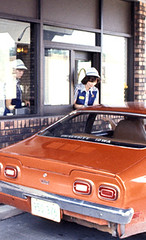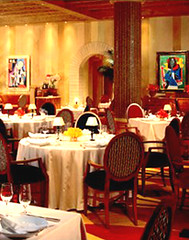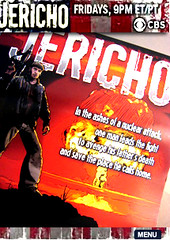It seems Coca-Cola has some proven company in breaking through the brand clutter. McDonald's, with more than 30,000 local restaurants serving 52 million people in more than 100 countries each day, has struck the neuroscience nerve.
Carrots, milk, and apple juice all taste better to preschoolers, ages 3-5, when they are wrapped in packaging that sports one of the most familiar brands in the world. At least that is what they found in San Mateo County, Calif. when 63 children were given the same foods. The only difference was the wrapper.
The impact is amazing, but it is the age at which this brand embeds itself that is extraordinary (and perhaps a little bit frightening). The research appeared in the Archives of Pediatrics & Adolescent Medicine and funded by Stanford and the Robert Wood Foundation and it was picked up by the Associated Press yesterday.
In a prior experiment, the researchers demonstrated that even a single exposure to a television advertisement affected preschool children's brand preferences. This study found that the frequency of eating at McDonald's was not the only influencer. The number of television sets in the household also played a factor.
This doesn’t surprise me. All of us, but children in particular, respond to visual and audio stimulus as if it were real whether we admit it or not. In other words, what we see on television has an equal chance to impact our decisions on a subconscious, if not conscious, level (assuming the writers and producers know what they are doing).
Founder Ray Kroc knew what he was doing. He not only raised the bar on the principles of quick service standardization, but also forever linked the idea (if not the practice) of quality, cleanliness, service, and value to McDonald’s name.
“If you work just for money, you'll never make it, but if you love what you're doing and you always put the customer first, success will be yours.” — Ray Kroc
Although some may argue not all local franchise owners measure up to Kroc’s vision, it doesn’t matter. McDonald's spends more than $1 billion dollars in advertising per year. That’s a whole lot of positive impressions.
Fun fact: Our first regional television script was written for McDonald’s in the early 1990s. It was part of a regional campaign to determine which of the “Arch” burgers would be introduced nationwide. While the “Arch Deluxe” won, the “California Deluxe” beat out Big Macs in some markets. McDonald’s has one of the strictest shot standards in the quick service industry; no one is allowed to actually “eat and chew” food on camera.

Carrots, milk, and apple juice all taste better to preschoolers, ages 3-5, when they are wrapped in packaging that sports one of the most familiar brands in the world. At least that is what they found in San Mateo County, Calif. when 63 children were given the same foods. The only difference was the wrapper.
The impact is amazing, but it is the age at which this brand embeds itself that is extraordinary (and perhaps a little bit frightening). The research appeared in the Archives of Pediatrics & Adolescent Medicine and funded by Stanford and the Robert Wood Foundation and it was picked up by the Associated Press yesterday.
In a prior experiment, the researchers demonstrated that even a single exposure to a television advertisement affected preschool children's brand preferences. This study found that the frequency of eating at McDonald's was not the only influencer. The number of television sets in the household also played a factor.
This doesn’t surprise me. All of us, but children in particular, respond to visual and audio stimulus as if it were real whether we admit it or not. In other words, what we see on television has an equal chance to impact our decisions on a subconscious, if not conscious, level (assuming the writers and producers know what they are doing).
Founder Ray Kroc knew what he was doing. He not only raised the bar on the principles of quick service standardization, but also forever linked the idea (if not the practice) of quality, cleanliness, service, and value to McDonald’s name.
“If you work just for money, you'll never make it, but if you love what you're doing and you always put the customer first, success will be yours.” — Ray Kroc
Although some may argue not all local franchise owners measure up to Kroc’s vision, it doesn’t matter. McDonald's spends more than $1 billion dollars in advertising per year. That’s a whole lot of positive impressions.
Fun fact: Our first regional television script was written for McDonald’s in the early 1990s. It was part of a regional campaign to determine which of the “Arch” burgers would be introduced nationwide. While the “Arch Deluxe” won, the “California Deluxe” beat out Big Macs in some markets. McDonald’s has one of the strictest shot standards in the quick service industry; no one is allowed to actually “eat and chew” food on camera.





















